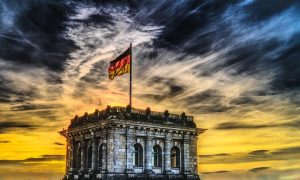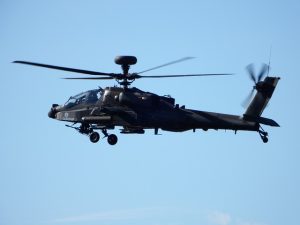前編】ロシアのウクライナ侵攻から3年—— 緊張が高まる欧州、そしてドイツの歴史的転換
 イメージ
イメージ
【前編】ロシアのウクライナ侵攻から3年——
緊張が高まる欧州、そしてドイツの歴史的転換
2022年2月、ロシアによるウクライナへの軍事侵攻が始まってから、
早くも3年の歳月が流れました。当初、多くの専門家や政治家たちは
「ロシアの侵攻は短期間で終結するだろう」との見方を示していました。
しかしその予測は大きく外れ、戦争は長期化の様相を呈し、
今なお激しい戦闘が続いています。戦局は泥沼化し、
欧州の安全保障体制そのものが根本から問い直される状況に至っています。
泥沼化する戦局と欧米諸国の対応
ウクライナはロシア軍による首都キーウへの進軍を防ぎ、
欧米諸国の支援を背景に反転攻勢を試みてきました。一方のロシアもまた
人的・物的リソースを総動員し、兵力の補充や戦線の再編成を継続しています。
特に東部ドンバス地域や南部クリミア周辺では、激しい戦闘が続き、
どちらの陣営も決定的な優勢を握れていないのが現状です。
ウクライナへの軍事支援をめぐっては、アメリカやイギリスが早期から
積極的な姿勢を取ってきましたが、近年特に注目を集めているのがドイツの対応です。
2024年末、ドイツ政府がウクライナに提供した長距離ミサイル(タウルス)について、
ロシア本土への使用を容認したという報道は、国際社会に大きな波紋を広げました。
これは、戦後ドイツの平和主義政策に照らしても、極めて大きな政策転換であると言えます。
戦後ドイツの原則からの逸脱
第二次世界大戦での敗戦以降、ドイツは「再び戦争を起こさない」という深い反省を礎に、
軍事力の行使に対して極めて慎重な姿勢を貫いてきました。
特に、国外派兵や攻撃型兵器の使用に関しては、憲法的制約のみならず、
国民感情としても非常にセンシティブな問題でした。
ところが、今回のミサイル使用容認は、ロシア本土にまで届く射程を持つ兵器の運用を
実質的に認めたことになります。
これは単なる戦術的な選択ではなく、戦後ドイツの「平和国家」という
アイデンティティに対する、根本的な問いかけであるように感じられます。

30年前に出会ったコラムの記憶
このニュースに接したとき、私の中にふとよみがえった記憶があります。
それは1991年、まだ私が海外留学を夢見て英語の勉強に励んでいた頃、
英字新聞で読んだあるイギリス人ジャーナリストのコラムでした。
そのタイトルは「Germany: Has Pandora’s Box Been Opened?
(ドイツはパンドラの箱を開けてしまったのか?)」というものでした。
その記事は、冷戦終結後のドイツ再統一を背景に書かれたもので、
当時のドイツ国内では「新しい首都をどこにするか」が大きな議論になっていました。
経済の中心地であるフランクフルト、戦後の暫定首都ボンに対する支持も根強い中、
最終的に国民の選択はベルリンへの遷都となりました。
この決定に対し、コラムの筆者は警鐘を鳴らしていました。
「ベルリンは血塗られた歴史を持つ都市であり、そこへの回帰は、
無意識のうちにドイツを再び軍事的な国家へと導く危険性がある」と。
私は当時、その意見に対して「いささか過剰な警戒ではないか」と思ったものでした。
敗戦から立ち直り、民主的な国家として新たな道を歩もうとするドイツに、
むしろ希望を見ていたのです。
 イメージ
イメージ
「パンドラの箱」は本当に開いたのか?
それから30年以上が経ち、ドイツは今や再び国際社会の中で
軍事的な責任を担おうとしています。
その姿勢の変化を見るにつけ、あの時の「パンドラの箱」という表現が、
単なる比喩ではなく、深い歴史的洞察に裏打ちされたものだったのではないかと、
私は考えるようになりました。
もちろん、今のドイツがかつてのような「帝国主義国家」に戻るとは思いません。
しかし、「戦後ドイツの平和主義」が持っていた象徴的な意味が、
現実の安全保障環境の変化によって再定義されつつあることは間違いありません。
次回の【後編】では、こうしたドイツの動きに連動するかのように、
NATO諸国全体がどのような姿勢を取っているのか、
そしてその先にあるヨーロッパの未来について、さらに掘り下げて考えてみたいと思います。
 image
image
[Part I] Three Years Since Russia’s Invasion of Ukraine —
A Tense Europe and Germany’s Historic Shift
It has now been three years since Russia launched
its military invasion of Ukraine in February 2022.
At the time, many experts and politicians believed the conflict would end swiftly.
However, that prediction proved to be drastically off the mark.
The war has dragged on, with intense fighting still ongoing,
and it has come to fundamentally challenge the security structure of Europe.
A Stalemated Battlefield and the West’s Response
Ukraine has successfully repelled Russia’s initial advance toward Kyiv and,
with the backing of Western nations, has launched counteroffensives.
On the other hand, Russia continues to mobilize its human and
material resources,
reinforcing its forces and reorganizing its battle lines.
Fierce battles persist particularly in the eastern Donbas region and
around southern Crimea, and neither side has achieved decisive superiority.
While the United States and the United Kingdom
have been proactive in providing military support to Ukraine from early on,
Germany’s recent actions have garnered particular attention.
Toward the end of 2024, reports surfaced that
the German government had approved the use of its long-range Taurus missiles
supplied to Ukraine for strikes against targets on Russian territory.
This marked a major policy shift for postwar Germany and
sent shockwaves through the international community.
A Departure from Germany’s Postwar Principles
Since its defeat in World War II,
Germany has maintained an extremely cautious stance
toward military engagement,
rooted in a deep national reflection — the resolve to “never again wage war.”
Especially regarding the deployment of troops abroad and
the use of offensive weapons, Germany’s policy has been restrained
not only by constitutional limits but also by strong public sentiment.
However, by allowing the use of long-range missiles capable of reaching Russian soil,
Germany has effectively permitted offensive operations —
a move that goes beyond mere tactical considerations.
It is, in many ways,
a profound challenge to Germany’s postwar identity as a “peaceful nation.”

A Column I Read 30 Years Ago
When I heard the news,
a memory suddenly resurfaced in my mind. It was 1991,
and I was diligently studying English with hopes of studying abroad.
One day, I came across a column in an English-language newspaper
written by a British journalist.
The title was: “Germany: Has Pandora’s Box Been Opened?”
The piece was written in the context of German reunification
following the end of the Cold War.
At the time, there was a heated national debate in Germany over where
to establish the new capital. While cities like Frankfurt—the economic center—
and Bonn, the provisional capital during the postwar years, had their supporters,
the final decision, made by public vote, was to move the capital back to Berlin.
The journalist issued a stark warning about this decision.
“Berlin is a city with a bloody history,” he wrote.
“Returning to it could unconsciously steer Germany back toward militarism.”
I remember feeling that this concern was a bit of an overreaction.
To me, Germany’s return to Berlin symbolized hope—
a democratic nation rising from the ashes of war.
 image
image
Has Pandora’s Box Truly Been Opened?
More than 30 years have passed since then.
Today, Germany is once again beginning to shoulder military responsibility
on the global stage.
Watching this shift unfold, I have come to feel that the phrase “Pandora’s Box”
was not just a metaphor, but a historically grounded insight.
Of course, I do not believe Germany is returning to its imperialist past.
But there is no doubt that the symbolic meaning of
“postwar German pacifism” is being redefined amid today’s drastically
changed security environment.
In the next installment, [Part II],
I will delve deeper into how NATO countries are responding in parallel with
Germany’s changing stance—and
what these developments might mean for the future of Europe.

